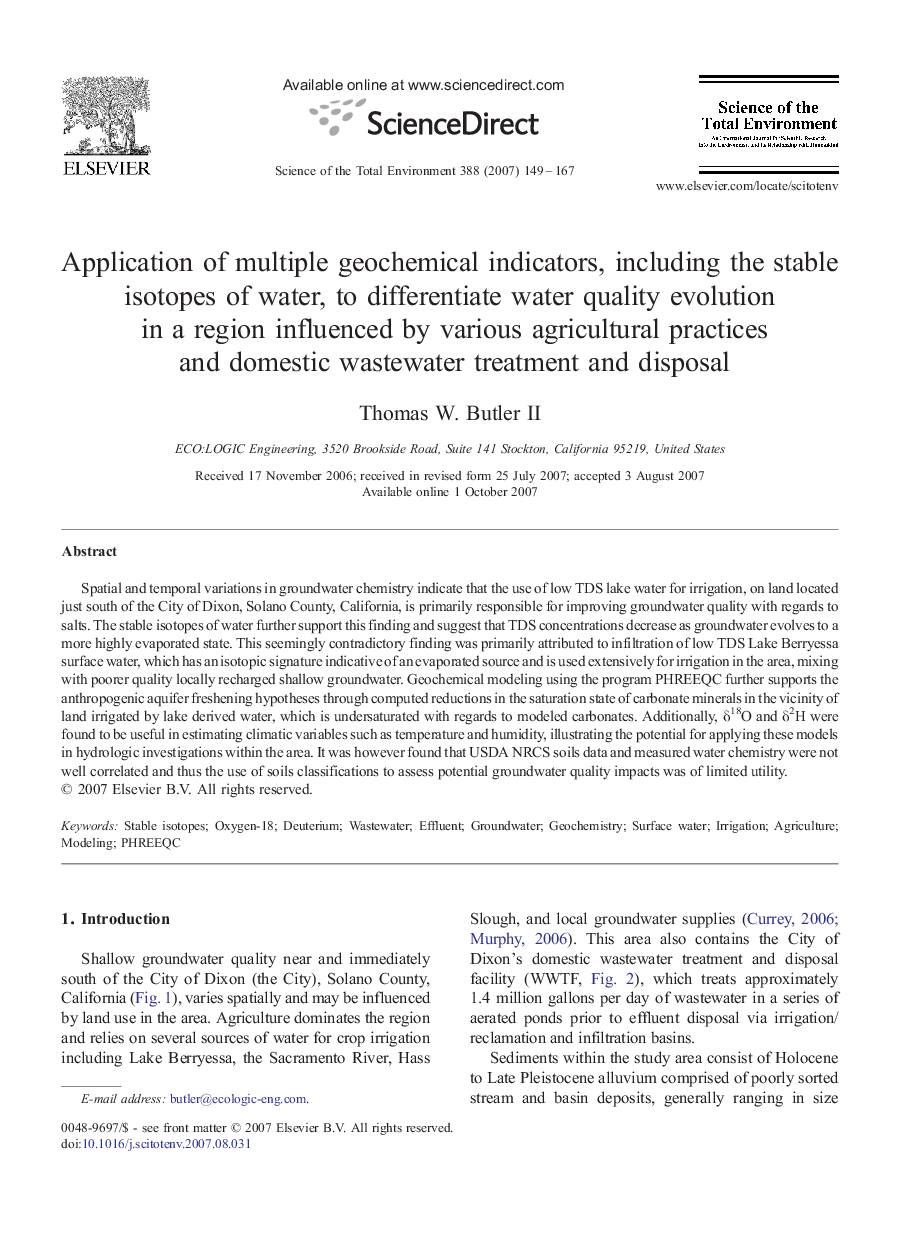| Article ID | Journal | Published Year | Pages | File Type |
|---|---|---|---|---|
| 4433235 | Science of The Total Environment | 2007 | 19 Pages |
Spatial and temporal variations in groundwater chemistry indicate that the use of low TDS lake water for irrigation, on land located just south of the City of Dixon, Solano County, California, is primarily responsible for improving groundwater quality with regards to salts. The stable isotopes of water further support this finding and suggest that TDS concentrations decrease as groundwater evolves to a more highly evaporated state. This seemingly contradictory finding was primarily attributed to infiltration of low TDS Lake Berryessa surface water, which has an isotopic signature indicative of an evaporated source and is used extensively for irrigation in the area, mixing with poorer quality locally recharged shallow groundwater. Geochemical modeling using the program PHREEQC further supports the anthropogenic aquifer freshening hypotheses through computed reductions in the saturation state of carbonate minerals in the vicinity of land irrigated by lake derived water, which is undersaturated with regards to modeled carbonates. Additionally, δ18O and δ2H were found to be useful in estimating climatic variables such as temperature and humidity, illustrating the potential for applying these models in hydrologic investigations within the area. It was however found that USDA NRCS soils data and measured water chemistry were not well correlated and thus the use of soils classifications to assess potential groundwater quality impacts was of limited utility.
